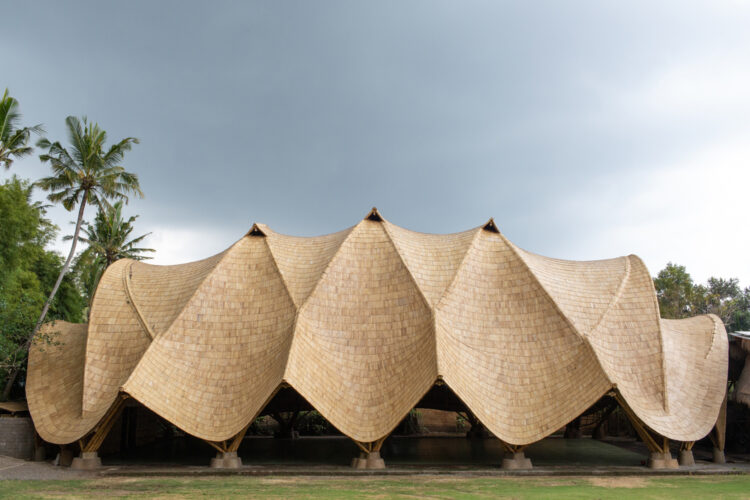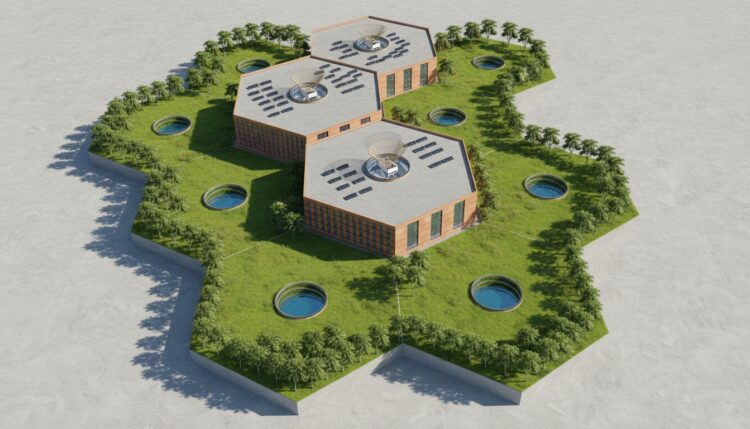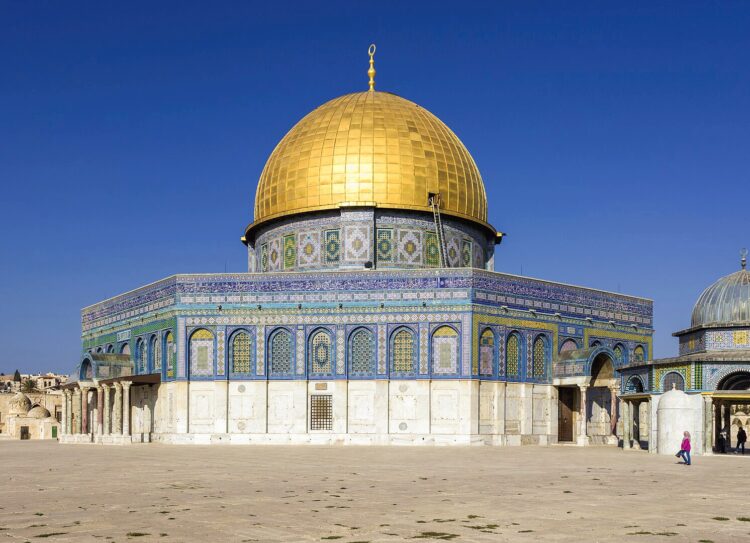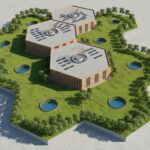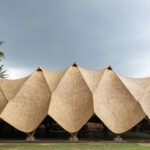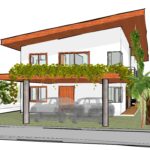Hi all, how is it going? We hope life is treating you guys well.
The Green School in Bali is more than a school — it’s an architectural manifesto for sustainability. Located in Sibang Kaja, near Ubud, the campus stretches across both sides of the Ayung River, embedded in jungle, gardens, and riverside landscape. Its buildings, layout, and materials don’t merely serve functionality; they embody a philosophy of harmonious living with nature.
In other words, a more holistic approach. Here’s a look at how its sustainable architecture works — what makes it special, what lessons it holds.
Before that, let’s think of what holistic thinking would be. ‘Holistic’ would be something that takes into consideration “the whole”, not excluding any of its parts. In other words, working as an integrated system. Nature itself represents the pinnacle of this idea.
According to Alchemy, similarly to Hindu Vedic teachings, each of us has a dominant chakra, which keeps us somehow trapped in a form of reality. Ideally, we should integrate all and balance the distortions in our system. Very often, we try to find solutions only using our minds (the 5th chakra). However, that is not quite a holistic approach since we are complete beings that need to be integrated, just like our planet Earth.

In light of that, Green School teaches us how to ground since we are little beings. Grounding (1st chakra) is as important to grow environmental awareness (6th chakra) as “action” itself (3rd chakra). When we ground, we can feel we are part of something larger (4th chakra), part of ‘Gaia’ (or Mother Earth), then with that inner knowing we can attract things (2nd chakra) and act in a more aligned way with the whole, a more conscious and creative way of acting (7th chakra).

Bamboo as Primary Material
One of the most striking features of Green School is its use of bamboo — local, rapidly renewable, strong, and remarkably versatile. Bamboo is used throughout: structural members, floors, roofs, and even furniture.
The school grows bamboo plantations and works with local farmers to source sustainably.
In particular, the new “Arc” building is almost entirely bamboo: it uses a system of tall bamboo arches (14 m high) spanning about 19 m free inside space, together with anticlastic (i.e., double-curved) bamboo grid-shells.
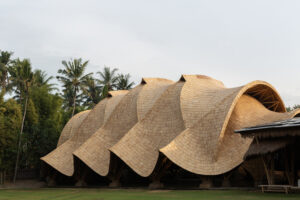
The Arc’s roof structure at Green School. Source: https://www.archdaily.com/964059/the-arc-at-green-school-ibuku
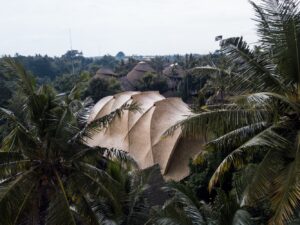
The Arc’s roof structure at Green School. Source: https://www.archdaily.com/964059/the-arc-at-green-school-ibuku
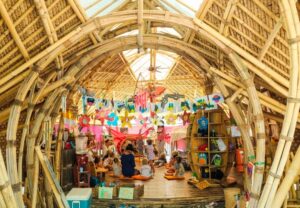
Internal image of the Early Years Campus at Green School. Source: https://bali.greenschool.org/
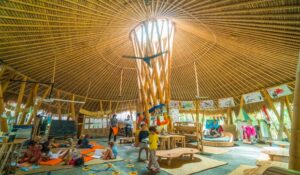
Internal image of the Early Years Campus at Green School. Source: https://bali.greenschool.org/
Passive Design & Climate Response
Because Bali is tropical, with heat and humidity, the architecture leans heavily on natural ventilation, shading, and open structures. Open-air pavilions, deep roof overhangs, no (or very few) walls. Roofs with steep slopes to shed rain. The Arc, for example, is open on the sides, with high ceilings helping hot air to rise.
Roofs often use thatch (alang-alang grass) or other local natural roofing materials.
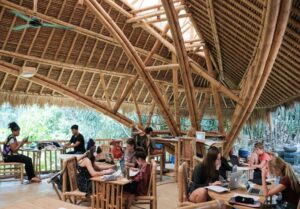
Middle School Campus internal view. Source: https://bali.greenschool.org/
Integration with Environment & Topography
Rather than bulldozing or flattening land, Green School’s layout follows the natural topography. They keep many trees, replant others, and even allow trees to grow through roofs in some cases. The layout takes advantage of river views, natural shading from the jungle, and organic garden spaces.
Gardens and food production are embedded into the campus — permaculture is part of the design. Students work in gardens; food comes from the site.
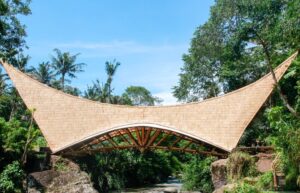
Bamboo structure bridge in the area of the Permaculture Garden. Source: https://bali.greenschool.org/
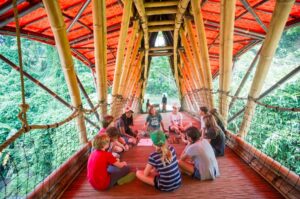
Bamboo structure bridge in the area of the Permaculture Garden. Source: https://bali.greenschool.org/
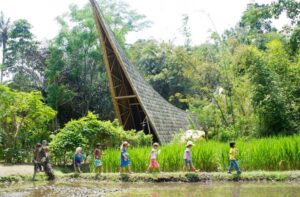
Bamboo structure bridge in the area of the Permaculture Garden, seen from the Primary School Campus. Source: https://bali.greenschool.org/
Renewable Energy & Supporting Systems
The architecture is one part of a broader sustainability system. Green School is powered at least in part by renewable energy: solar panels, a micro-hydro vortex generator, etc. Hot water and cooking systems use bamboo sawdust as fuel.
Moreover, wastewater, transport, and other infrastructure are designed or adapted to reduce ecological impact.
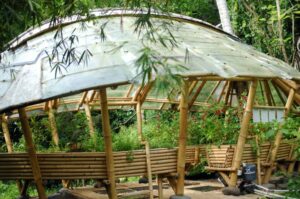
Bamboo structure in the Aquaponics area. Source: https://bali.greenschool.org/
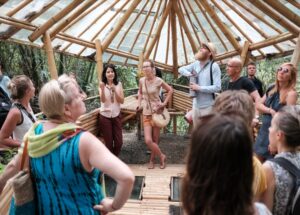
Bamboo structure in the Aquaponics area seen from inside. Source: https://bali.greenschool.org/
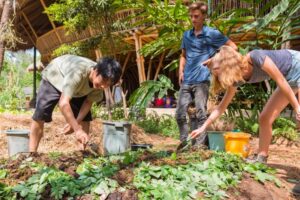
Communal garden in the Heart of School area. Source: https://bali.greenschool.org/
Innovation & Engineering
Green School isn’t about rustic or “primitive” construction; it’s about pushing the engineering limits of natural materials. The Arc building, for example, employs advanced techniques in bamboo joinery, geometry (ant-iclastic shells), and structural research.
They treat bamboo to protect it (e.g. against insects), and combine traditional techniques (mud walls, thatch, alang-alang) with modern engineering.
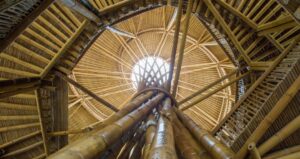
Internal view of the bamboo structure of the Heart of School area. Source: https://bali.greenschool.org/
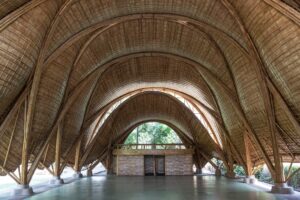
Internal view of the bamboo structure of the Arc. Source: https://bali.greenschool.org/
Educational & Community Impact
Perhaps most importantly, everything in the architecture is part of the learning: students are surrounded by structures that model the values they are taught. The buildings themselves become classrooms in sustainability.
It also plays a community role — not just for the students, but local artisans, builders, and farmers all get involved in sourcing materials and constructing. Skills and systems built around local ecology.
The School also offers Yoga classes to the children as part of the curriculum.
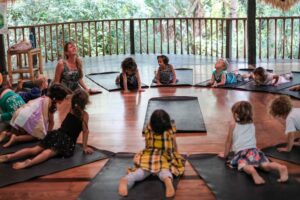
Yoga Shala internal view. Source: https://bali.greenschool.org/
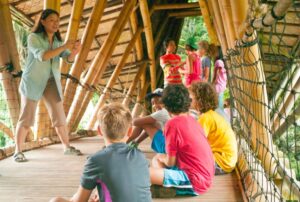
Bridge internal view around the Permaculture Garden area. Source: https://bali.greenschool.org/
Lessons & Inspiration
Green School offers many insights for sustainable architecture globally:
- Using local, renewable materials can reduce carbon footprint dramatically compared to steel, concrete, or non-renewable imports.
- Designing for climate — open air, shading, natural ventilation — means less reliance on air-conditioning and mechanical systems.
- Integrating landscape and topography rather than fighting them preserves ecosystems, reduces site disturbance, and creates healthier spaces.
- Blending craftsmanship & engineering: traditional knowledge and local labor with modern structural research offer real possibilities for beauty, durability, and performance.
- Education & community integration provides both purpose and sustainment: buildings that teach, materials that engage, systems that involve and integrate.
Challenges
Of course, there are challenges. Bamboo requires proper treatment to last; maintenance and resilience (against humidity, termites, heavy rain, etc.) are non-trivial. Scalability, cost, and getting skilled labor for advanced bamboo techniques can be limiting. But Green School is showing how many of those can be addressed.
Conclusion
The Green School in Bali is not just building classrooms; it is building a vision — one where architecture, ecology, education, and community are woven together, addressing a holistic vision. Its sustainable architecture shows that with creativity, respect for natural systems, and investment in ingenuity, the built environment can heal and enhance rather than consume and degrade. Undoubtedly, it stands as a hopeful model for architects, educators, and communities worldwide.
If you liked this post, don’t miss some of our other posts related to the enchanting spiritual island of Bali: ‘Pura Balinese Temples‘ and ‘Permaculture Volunteering Experience‘.
Cover Image source:
https://www.archdaily.com/964059/the-arc-at-green-school-ibuku
Important Sources:
https://www.archdaily.com/81585/the-green-school-pt-bambu
https://www.archdaily.com/964059/the-arc-at-green-school-ibuku
https://the.akdn/en/how-we-work/our-agencies/aga-khan-trust-culture/akaa/the-arc-at-green-school
https://www.brightvibes.com/green-school-bali-the-worlds-most-eco-friendly-school/
https://greenteacher.com/green-school-in-bali/
https://worldarchitecture.org/architecture-projects/vmee/green_school__ubud_bali-project-pages.html
https://theedgemalaysia.com/article/sustainable-learning-green-school-bali
https://iqd.it/en/architecture/the-arc-at-green-school-ibuku/
https://designlikeyougiveadamn.com/green-school-bali/

